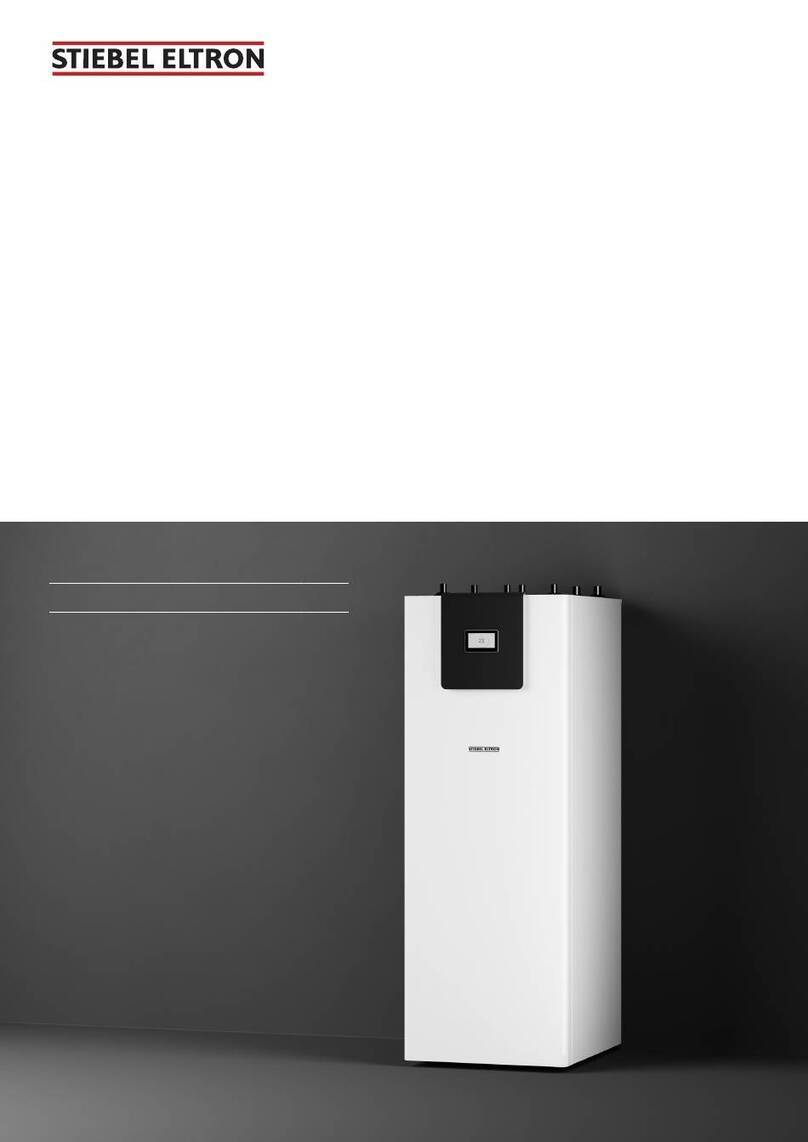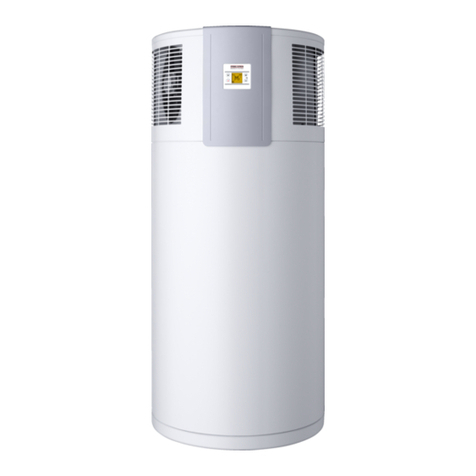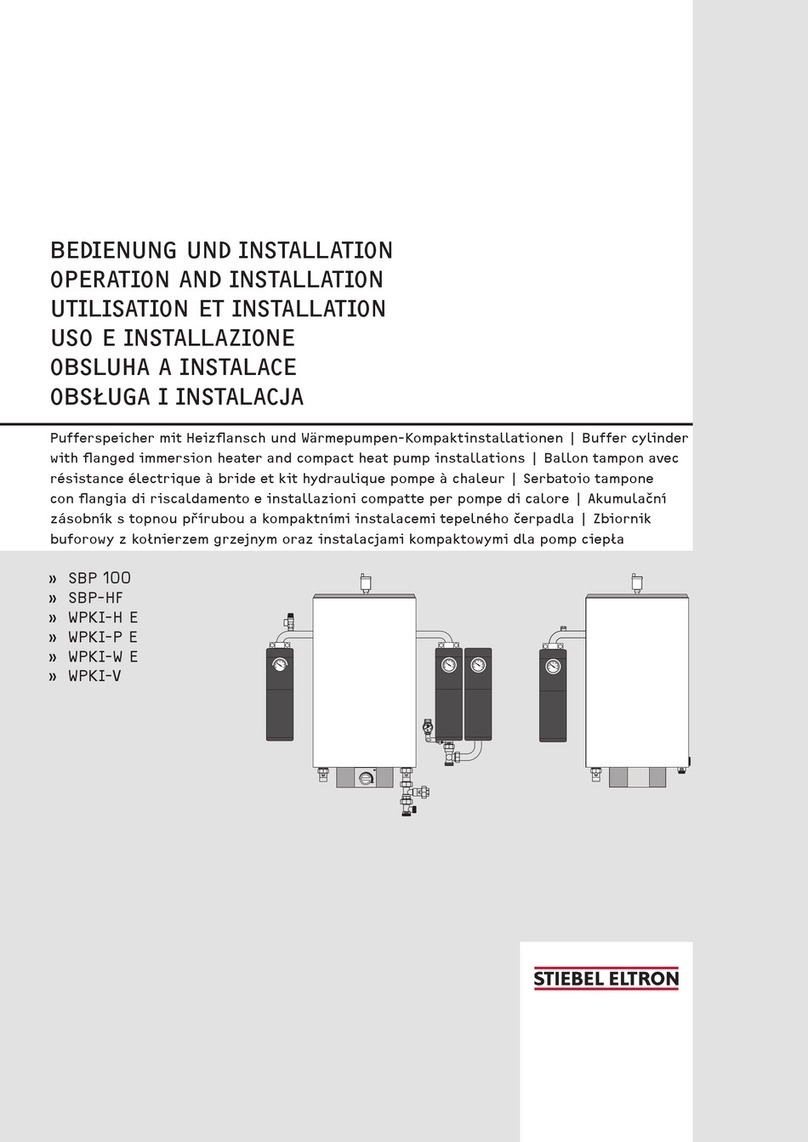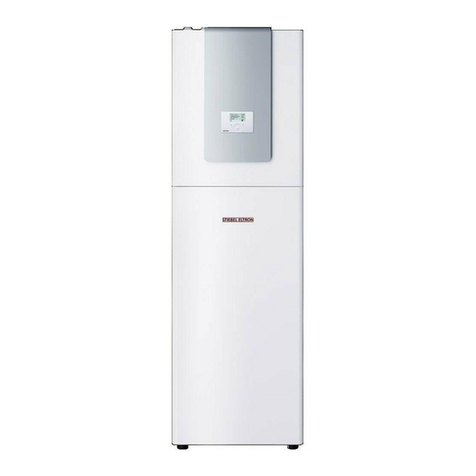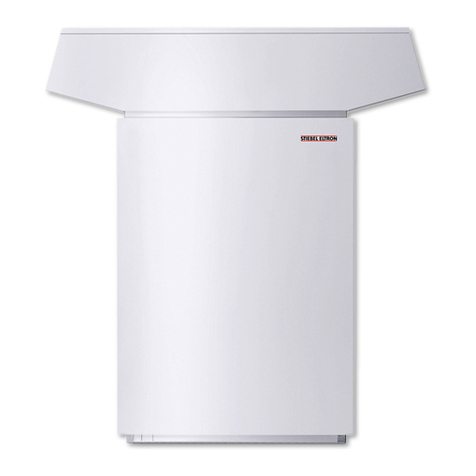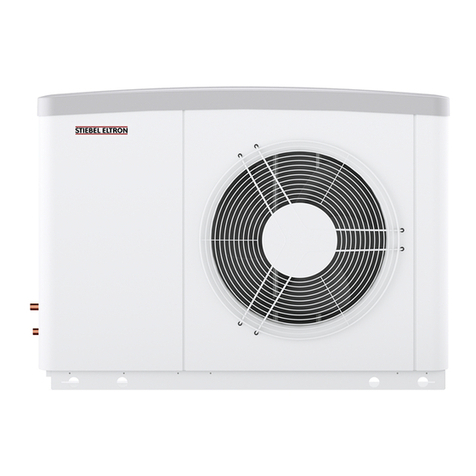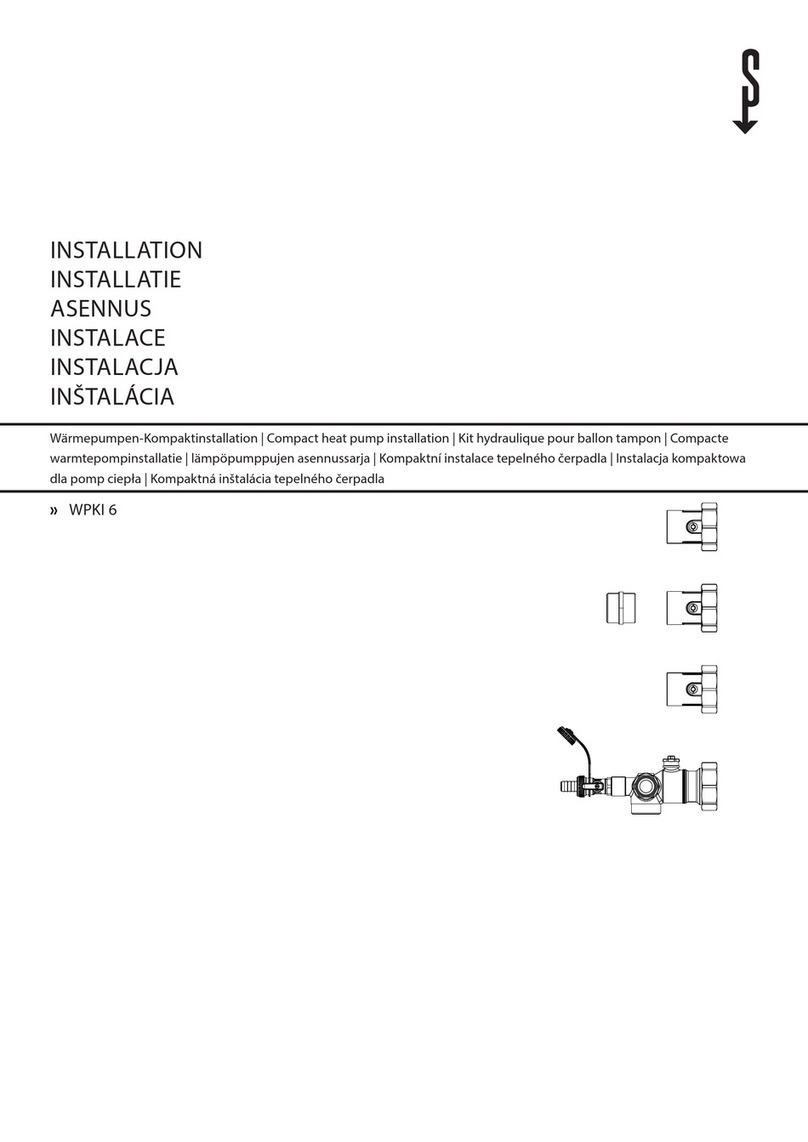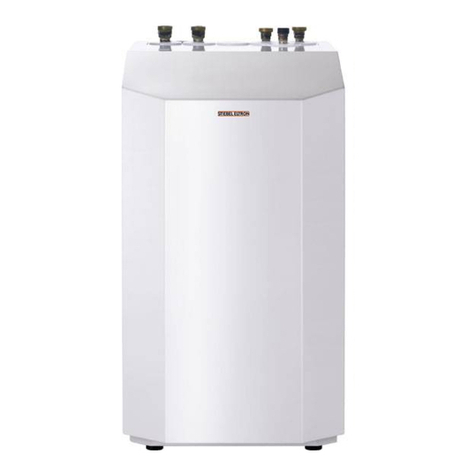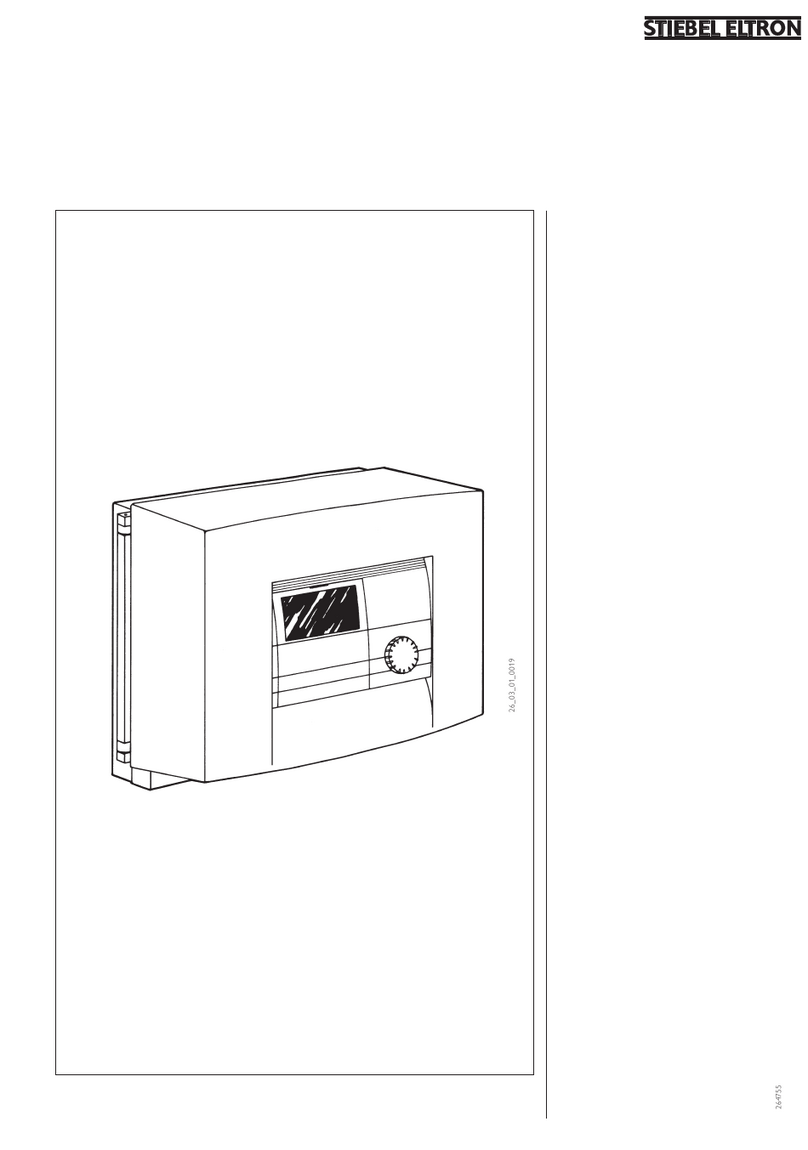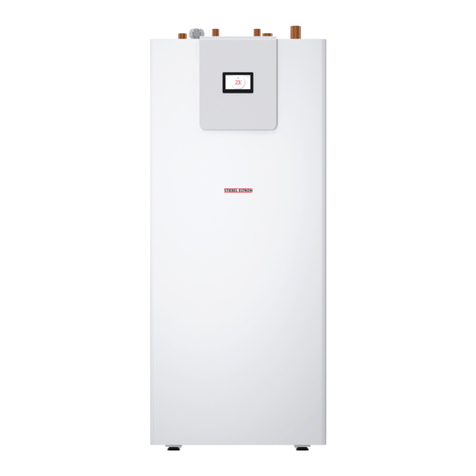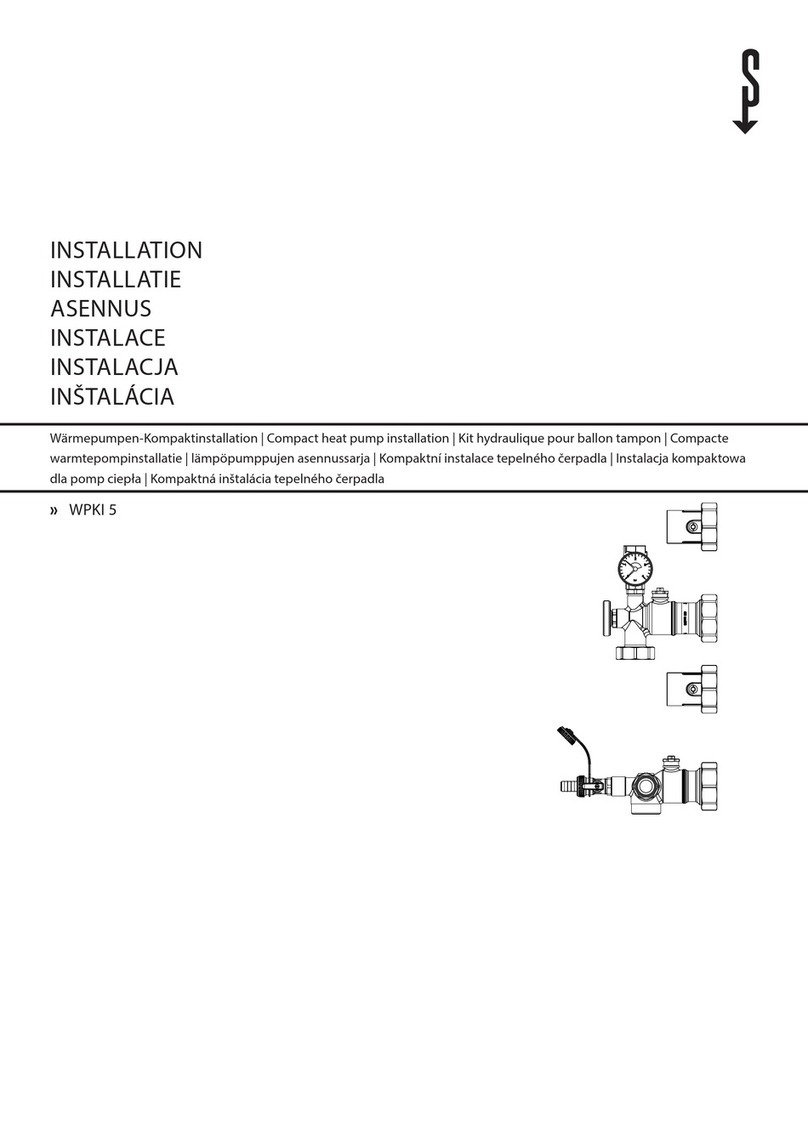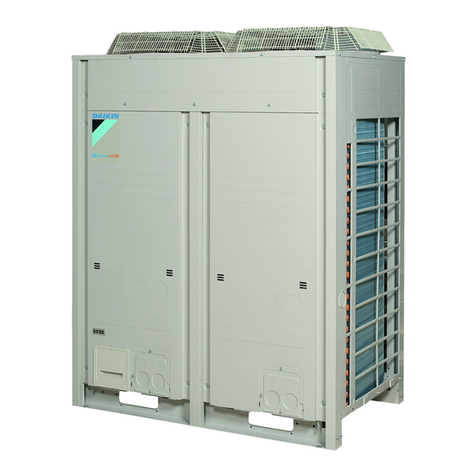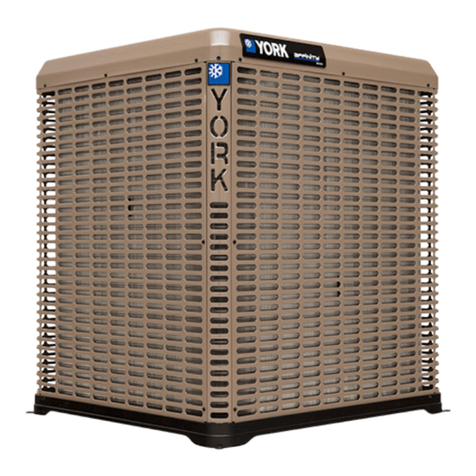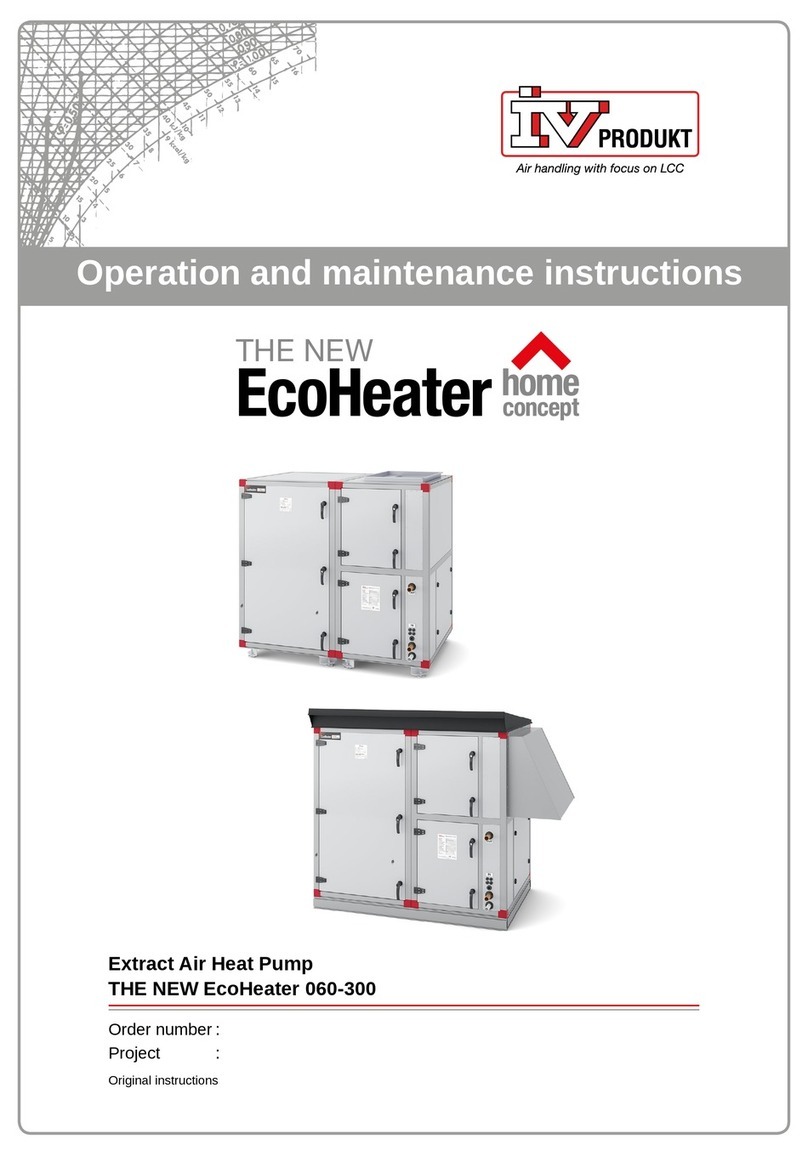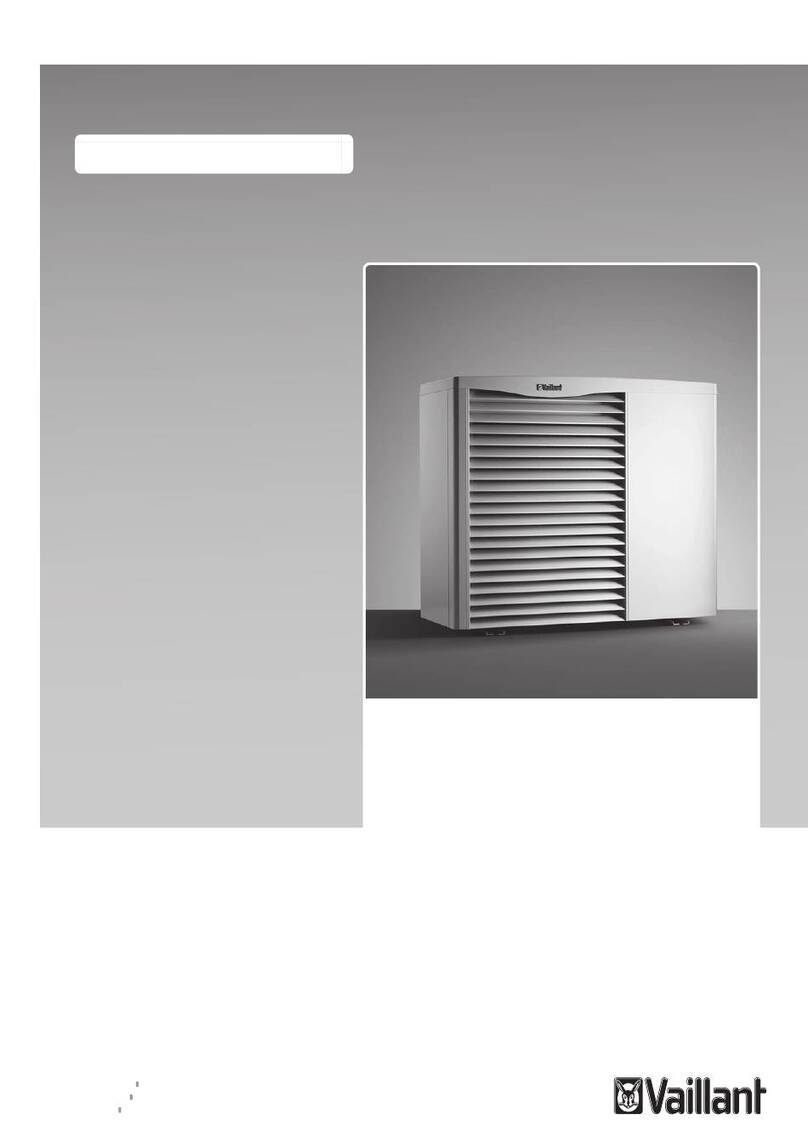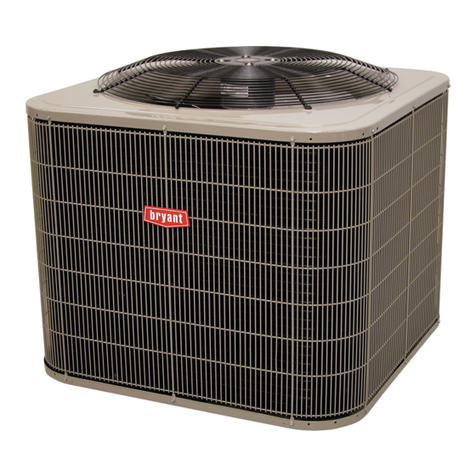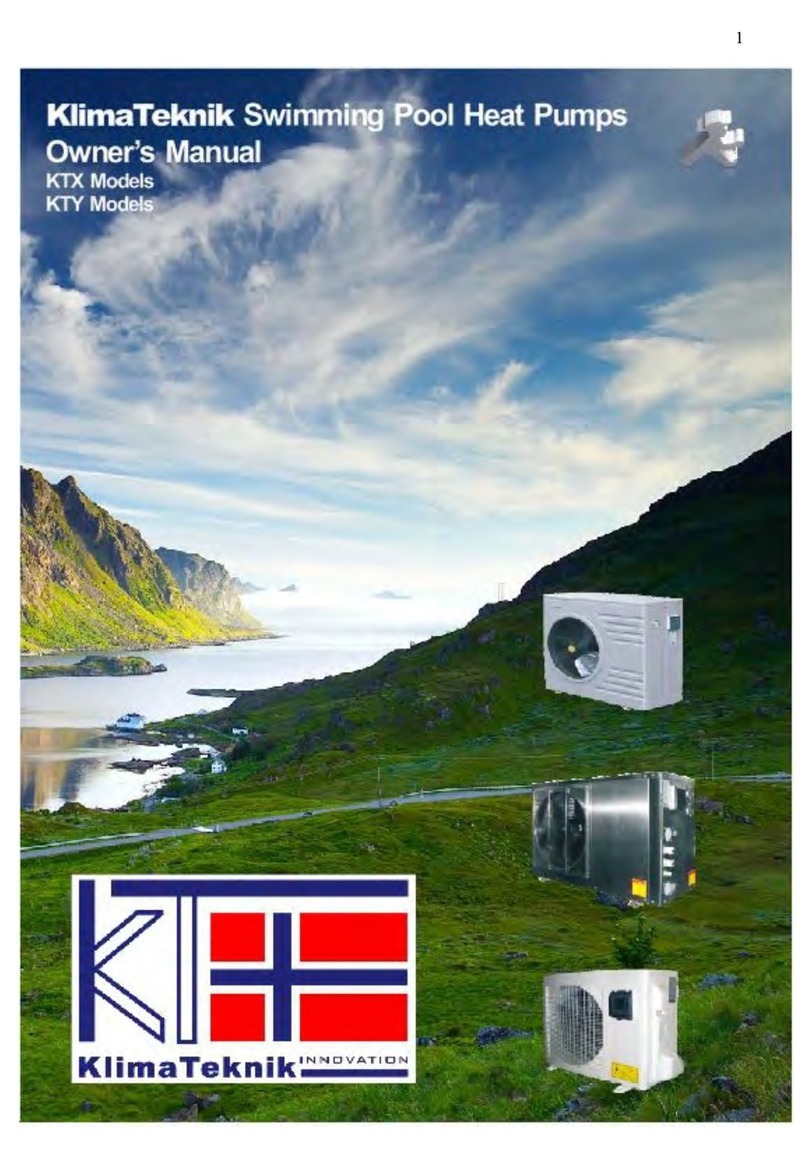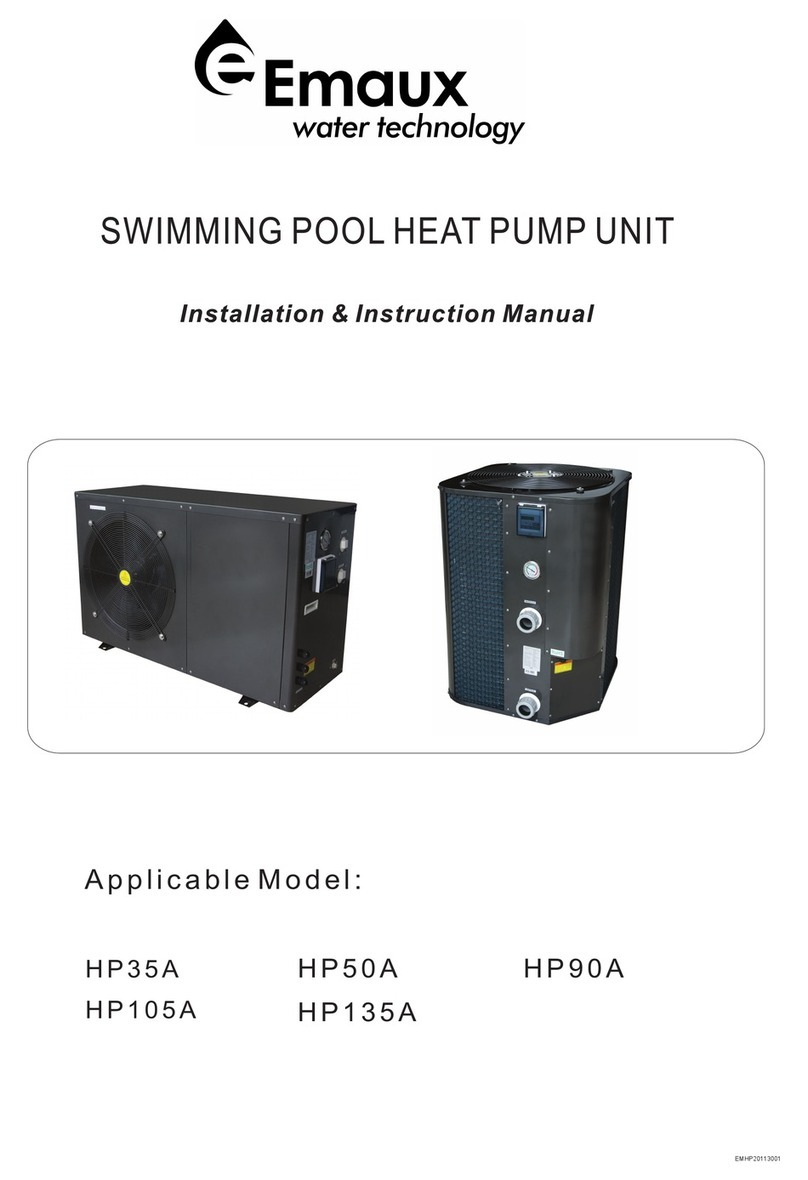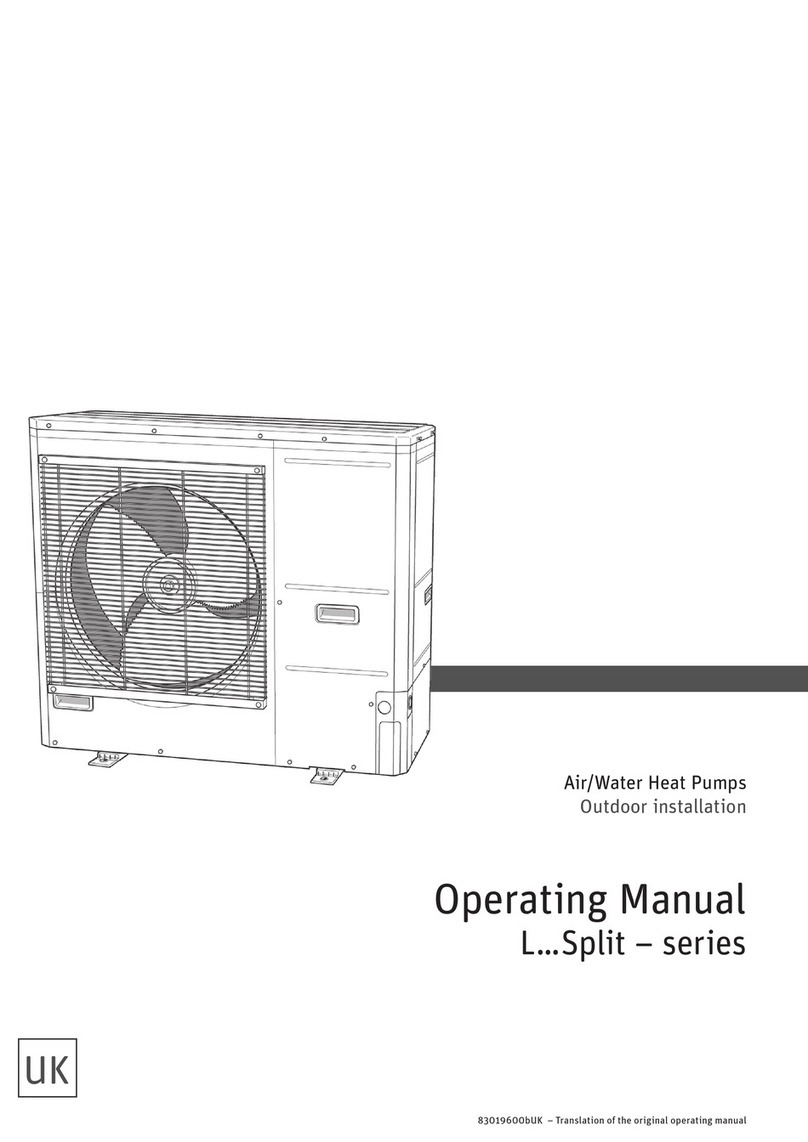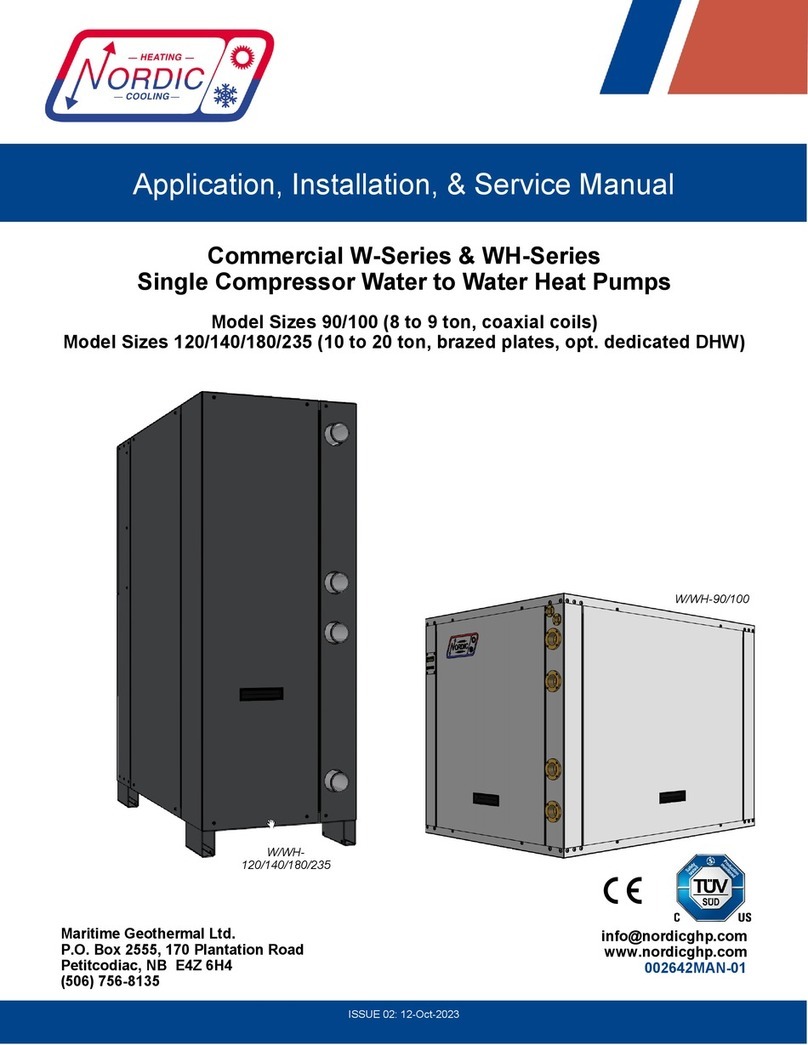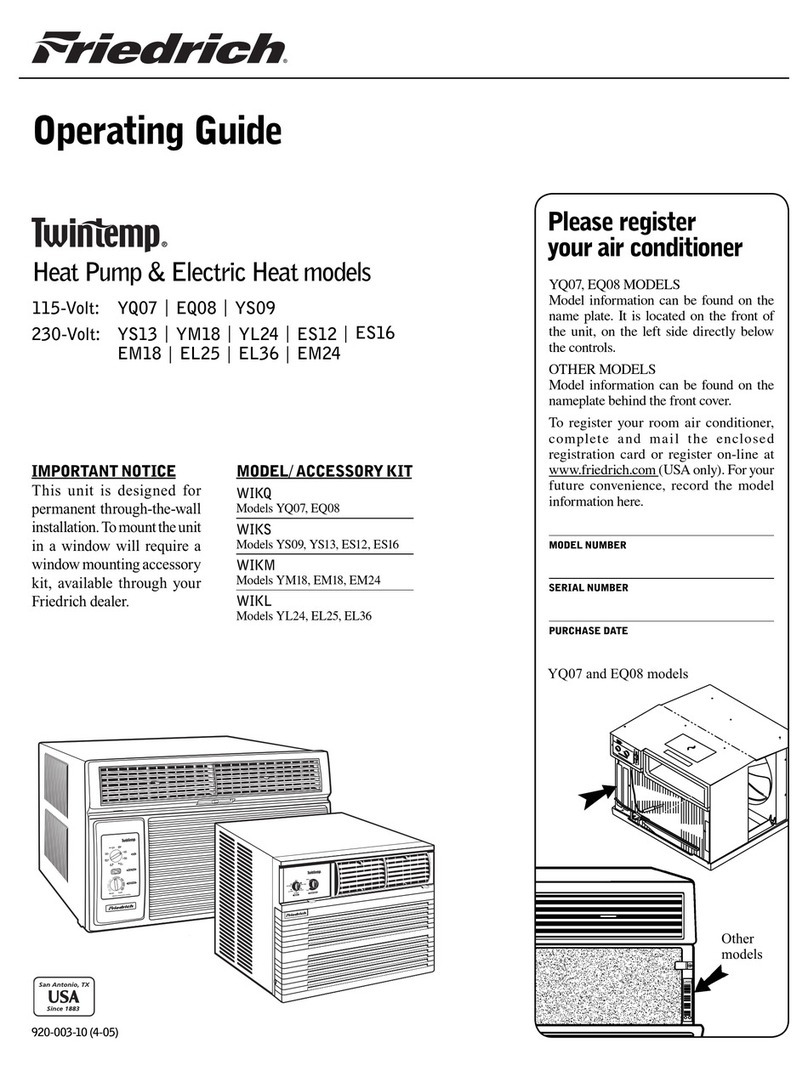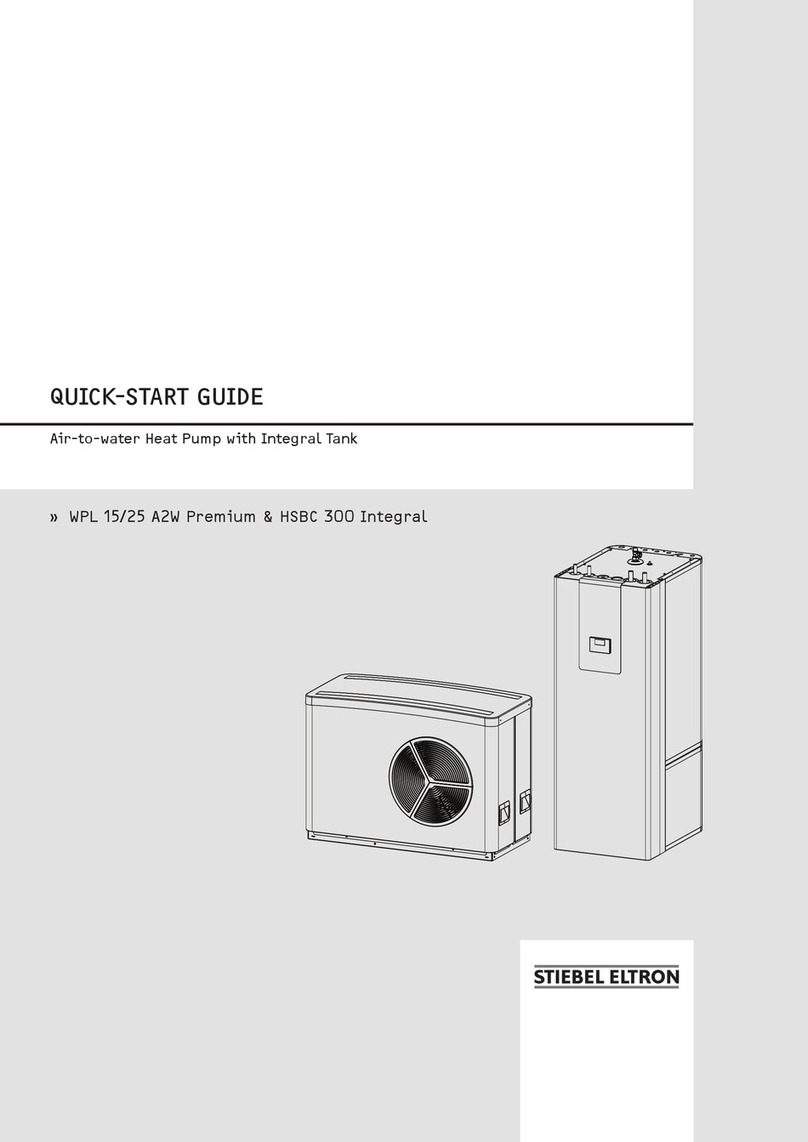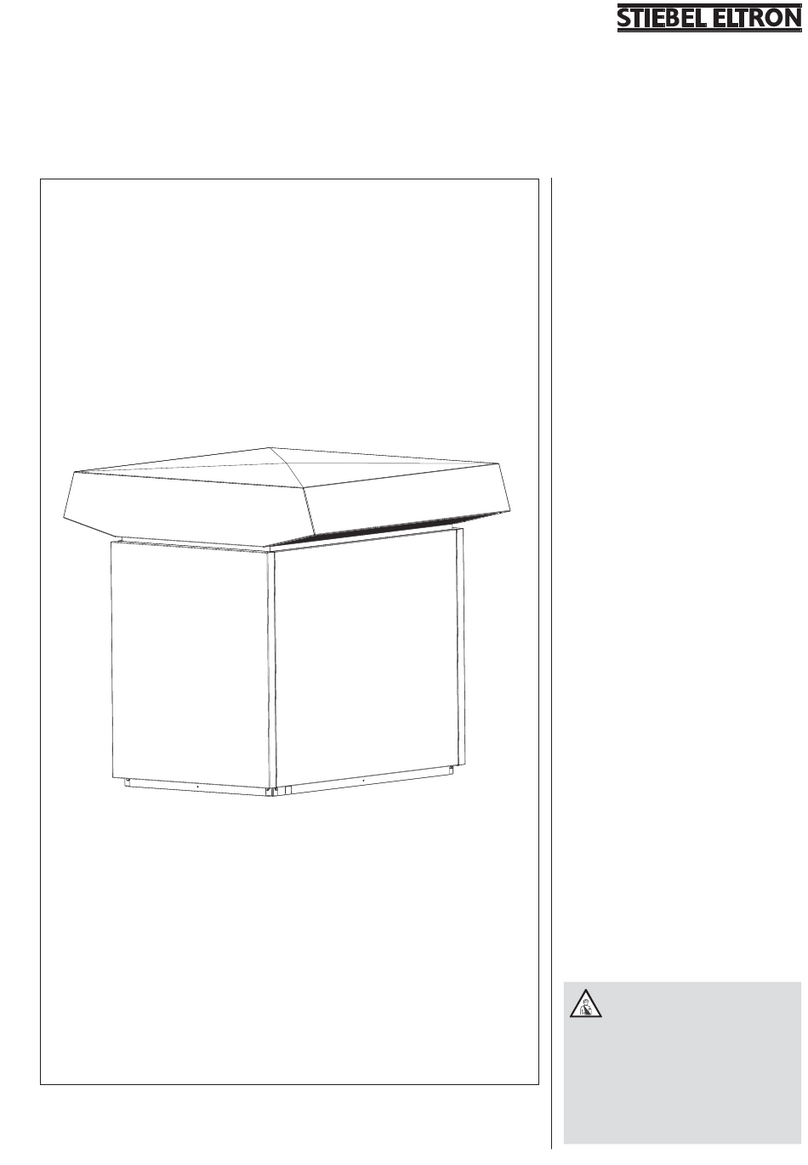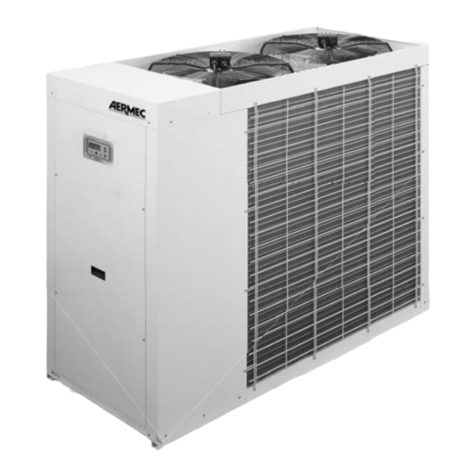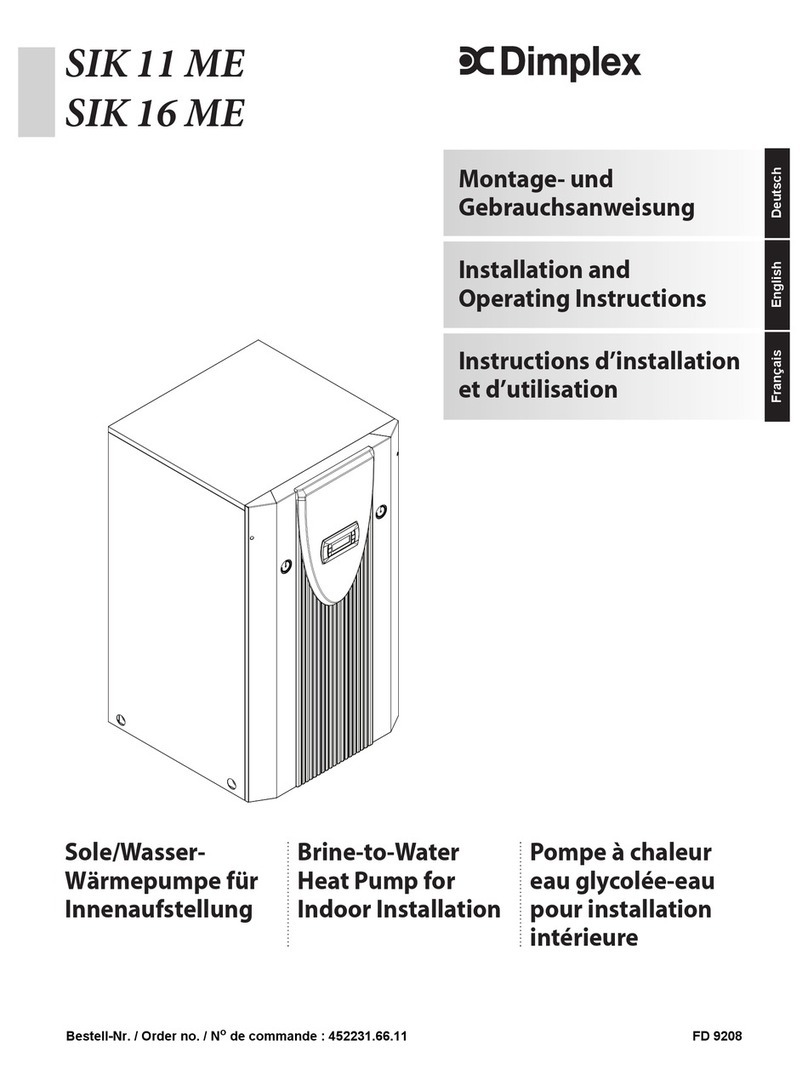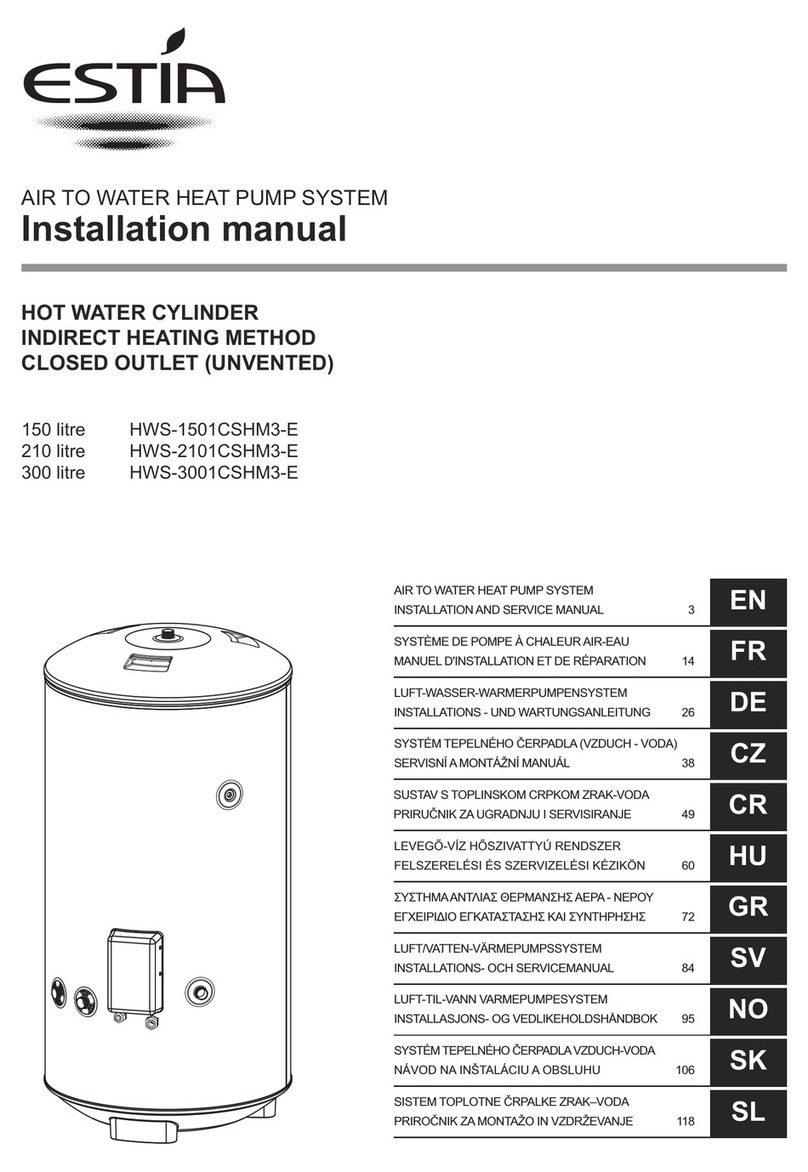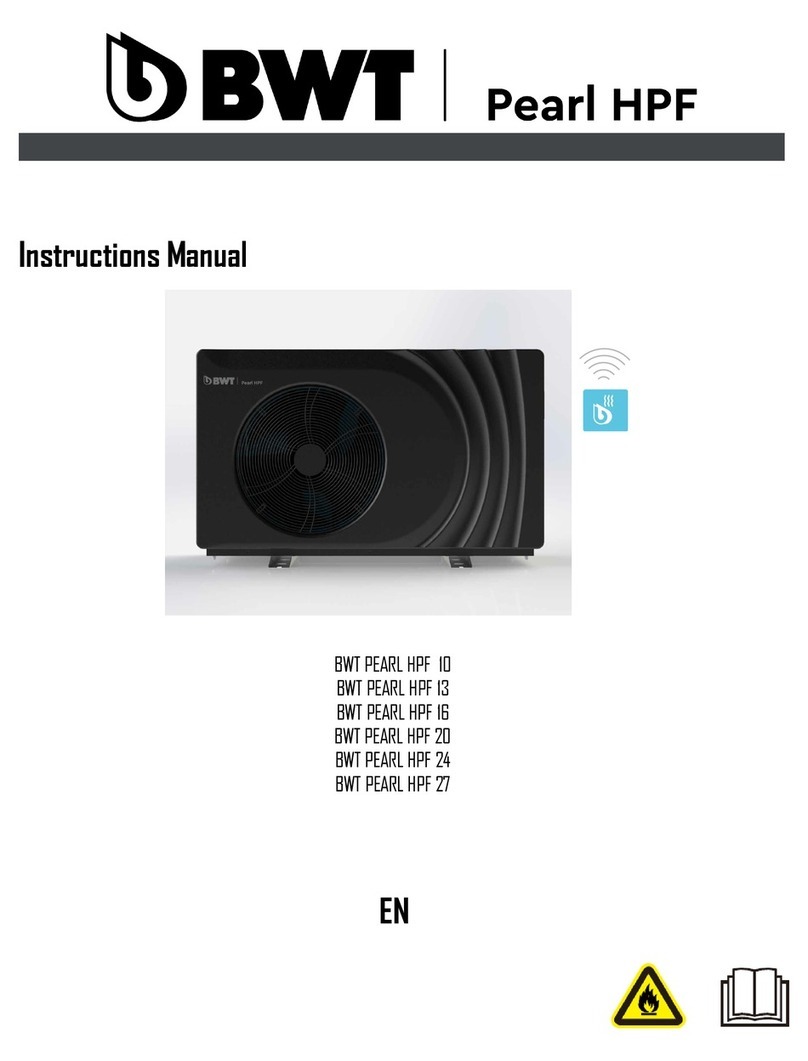2.5 Commissioning
Only approved contractors may
commission this equipment and instruct
the owner in its use.
Commissioning
Fill, vent and thoroughly flush the—
device.
Check the safety assembly.—
Inform the user that water may drip
from the safety valve whilst the water
is being heated up.
Switch ON the power supply—
Note:
Never operate the equipment outside—
the temperature range 0 °C to + 42 °C.
At temperatures below - 15 °C
(e.g. transport/storage), the safety
temperature cut-out may respond.
Press the reset button after the
temperature is much higher than
-15 °C (Fig. 3, pos. 3).
2.6 Safety equipment and
maintenance
Only qualified contractors must carry out
the installation in accordance with these
instructions.
On the equipment
In case of a fault, the safety equipment
of the WWK 300 interrupts the relevant
power circuit.
Please note: Before any work on
the equipment, disconnect all
poles from the mains.
High limit safety cut-out (STB) electric
booster heater
Equipment with electric booster heater is
stopped if the DHW temperature exceeds
95 °C.
When the source of the fault has been
removed, reset the high limit safety cut-
out by pressing the reset button (pos 2,
Fig. 3).
The heat pump top cover should be
opened for access to this device as shown
in fig. 3.
Safety high pressure limiter (SDBK) Fig 3
The safety high pressure limiter shuts
down the compressor, if the pressure
inside the refrigerant circuit exceeds the
permissible maximum value. The safety
high pressure limiter may also respond,
if the WWK 300 is operated above its
permissible limit (>42 °C air temperature)
or the control thermostat of the heat
pump fails to respond. Reset the high
pressure limit safety cut-out by pressing
the reset button (pos 3, Fig. 3), after the
cause of the fault has been removed.
Protective motor thermoswitch
The protective motor switch will shut
down the compressor, if it is overloaded
because of excessive thermal load.
Remove the relevant fault. The protective
motor switch restarts the compressor
automatically after 5 - 15 seconds.
Protective anode
An anode for the protection of the DHW
cylinder is inserted right in the center of
the heat pump cylinder (item 17, fig.3).
Replace the anode with a new one if
the installed one has been consumed.
When installing the anode, ensure that
the metallic conductor connection is
correctly made. It’s recommended for first
anode inspection to happen after 2 years
after installation. Unless in areas where
total dissolved solids exceeds 400 mg/L
the magnesium alloy anode should be
replaced with an aluminium anode.
Inspections should be more frequent.
Your contractor, who will be familiar with
your water quality, will advise you of the
optimum timing for inspection thereafter.
Should it be impossible to insert a rod
anode, part no. 143496 from above, you
may have a sectional anode installed
instead.
Cleaning the evaporator
Maintaining the full output of the WWK
300 requires an occasional professional
cleaning of the evaporator. Clean the
evaporator only with water and a brush.
Never use acidic or alkaline cleaning
solutions.
Further information regarding the
equipment:
Cleaning and descalingz
After removing the plug or the electric
booster heater (if installed), clean
the cylinder through the inspection
aperture.
Use a descaling pump to descale the
cylinder. Connect the pump between
the cold water connection and the
inspection aperture. Ensure that the
protective anode is removed prior to
descaling. When installing the anode,
ensure that the metallic conductor
connection is correctly made.
zDraining the cylinder:
Close the shut-off valve in the cold—
water supply.
Fully open the hot taps at all draw-—
off points.
The cylinder is drained via the cold—
water inlet line. Residual water
remains in the lower part of the
cylinder.
Note: Hot water can be expelled
during draining.
On the system
Safety valve (on-site)
This valve opens when the water
pressure
exceeds the preset value of 600 kPa
(6 bar) thereby relieving the pressure. It is
adjusted so that no water will be expelled
when heating is switched OFF. Should it
continue to drip excessively, either the
valve seat has become contaminated, the
water pressure is too high or the pressure
reducing valve has become faulty.
Pressure reducing valve (on-site
provision)
Check the valve for perfect function.
Replace it, if required.
Regular valve maintenance
Safety requires that valves are regularly
checked for perfect function. For this,
regularly vent the safety valve until a full
stream of water flows from it. Close the
safety valve after checking.
How quickly limescale builds up depends
on the local water quality.
As your local contractor is familiar
with your local water quality, let him
determine the timing of this check.
















